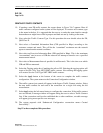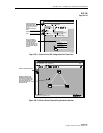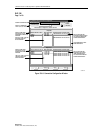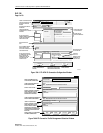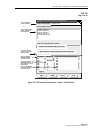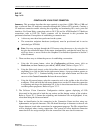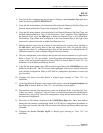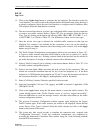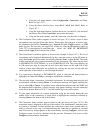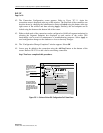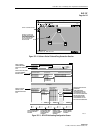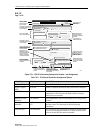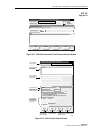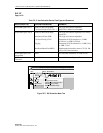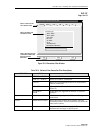
1152700 • Issue 1 • February 2001 • Operation and Maintenance
Page 2-376
© 2000, ADC Telecommunications, Inc.
DLP-787
Page 3 of 12
15. Click on the Update Leaf button to configure the leaf endpoint. The interface in the first
“Leaf Interface” box will now have the asterisks before the identification string showing it
as already configured. Select the next Leaf Interface to configure until all interfaces have
VPI assigned. Select the Next button to continue.
16. The next screen allows the user to select a pre-configured traffic contract for the connection
or create a new traffic contract. Refer to Figure 787-5 for an example. Select the Service
Class Type by clicking on the button and selecting CBR, VBR, UBR1, RT-VBR1, 2, or 3,
or NRT-VBR1, 2, or3. Refer to Table 787-1 for definitions of these service class types.
17. Once the service class type is selected, the available traffic contracts for that type are
displayed. If a contract is not available for the connection, a new one can be created by
double-clicking on <New>, otherwise select the existing traffic contract, click on the Apply
button, and go to step 25.
18. The Traffic Contract Configuration screen appears similar to the one shown in Figure 787-
6. Type in a traffic contract name that will be intuitive to the user at a glance (i.e., specify
the data rate in the name, etc.). Existing contracts listed in the next box may be selected to
pre define the options if creating an identical contract with a different name.
19. Select a Traffic Contract Type by clicking on the desired button. Refer to Table 787-2 for
all traffic contract configuration options.
20. Select a rate unit (Kpbs, Mbps) and enter the peak cell rate for the connection. This rate
should not exceed the maximum data rate for any of the leaf endpoints (i.e., If the Root
endpoint is a 155SM and the leaf endpoints are T3 and T1 cards, the maximum cell rate for
the connection should be 1.544 Mbps as anything higher would be discarded.)
21. Enter a Cell Delay Variation Tolerance specified in microseconds.
22. Select the Sustainable Cell rate, CLP, tagging, and MBS as desired if applicable (ATM
VBR QOS Class II).
23. Click on the Apply button using the left mouse button to create the traffic contract. The
system should respond with “Traffic Contract <name of contract> created successfully.”
Select the OK button to close the message window, and then select Close on the traffic
contract configuration window.
24. The previous Connection Configuration window appears again displaying the Ingress
Traffic Contract types. If the traffic contract just created is not displayed, ensure that the
correct Service Class Type is selected. Select the traffic contract and click on the Apply
button at the bottom of the screen.
25. The system may take several seconds to complete the connection and responds with
“Configuration Successful”. Verify the connection configuration was completed by
accessing the Subnetwork Connection Filter window using one of the following methods
from the GUI main window:



